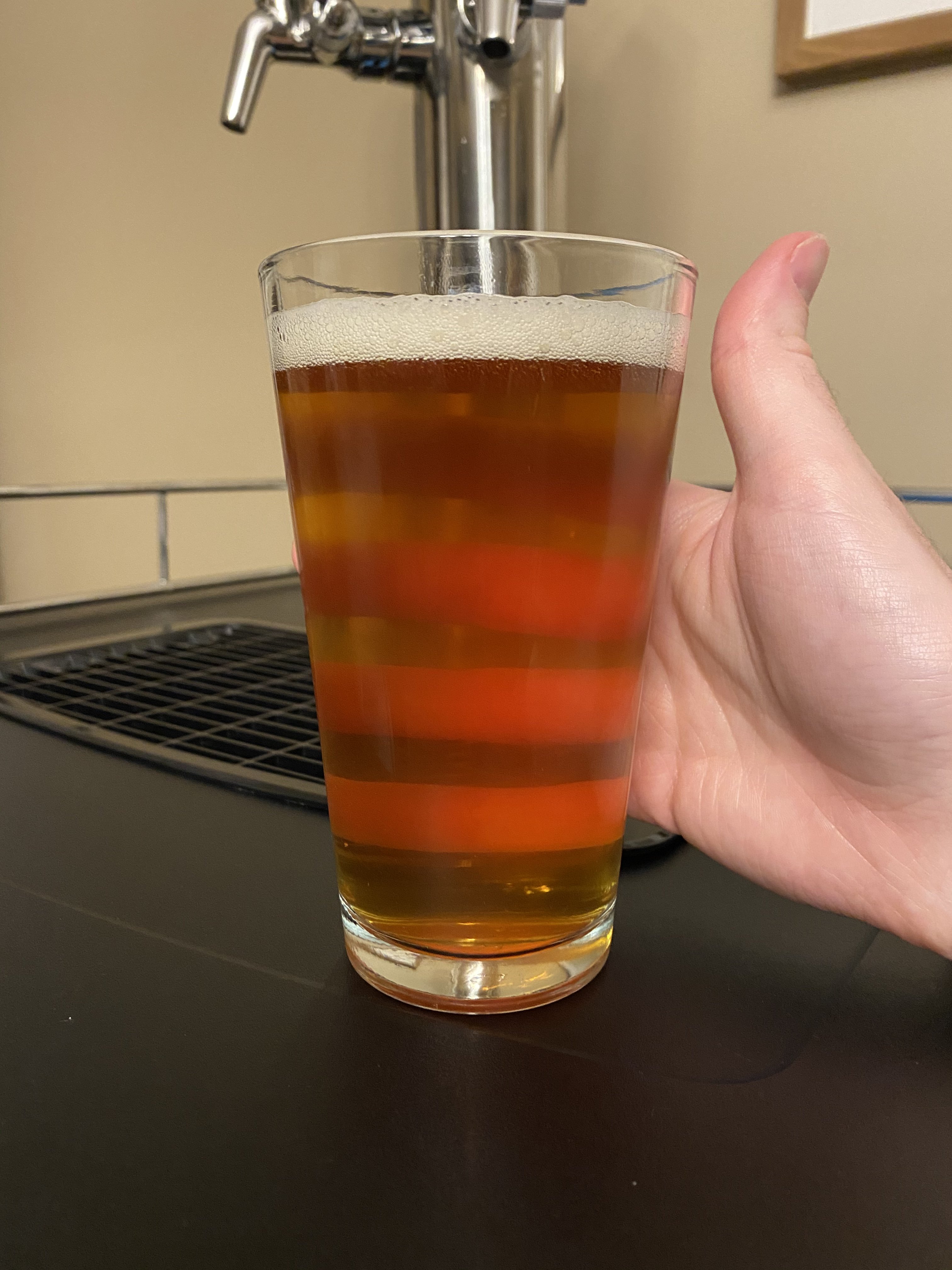Good evening! I have brewed 8 beers since October using my Anvil Foundry, which I have fermented in my Spike CF5 and kegged via closed pressure transfer after a 2-3 day cold-crash at 38 degrees. My beers are usually very cloudy until I get to the last quarter of the keg and then become crystal clear.
The last beer I brewed was a Mosaic pale ale using the same grain bill and yeast as a previous pale ale that I brewed. The only thing I changed was the hops. I made sure to follow the exact same fermentation schedule as the previous pale ale and cold-crashed for the same length of time (3 days) because I wanted the only variable to be the hops.
After dumping almost a pint after tapping the keg, I noticed that the beer seemed unusually clear. Here I am now 5 beers in, and it is super clear, maybe even clearer than the American light lager I brewed before this and fined with gelatin unlike the rest of my beers. While many posts on here ask, “What did I do wrong?” I am asking, “What did I do right?”
The only idea I have is that I did not dump any trub from this batch. Normally I will dump as much trub as possible through the bottom dump valve before cold-crashing. I didn’t do that this time. I know dumping trub stirs stuff up, but I always figured the cold-crash would settle everything out before I kegged.
So what do you all think? Does that sound like the “culprit” or could there be something else I’m not considering or that I might not have even realized happened that could be contributing to the clearness of my beer?

The last beer I brewed was a Mosaic pale ale using the same grain bill and yeast as a previous pale ale that I brewed. The only thing I changed was the hops. I made sure to follow the exact same fermentation schedule as the previous pale ale and cold-crashed for the same length of time (3 days) because I wanted the only variable to be the hops.
After dumping almost a pint after tapping the keg, I noticed that the beer seemed unusually clear. Here I am now 5 beers in, and it is super clear, maybe even clearer than the American light lager I brewed before this and fined with gelatin unlike the rest of my beers. While many posts on here ask, “What did I do wrong?” I am asking, “What did I do right?”
The only idea I have is that I did not dump any trub from this batch. Normally I will dump as much trub as possible through the bottom dump valve before cold-crashing. I didn’t do that this time. I know dumping trub stirs stuff up, but I always figured the cold-crash would settle everything out before I kegged.
So what do you all think? Does that sound like the “culprit” or could there be something else I’m not considering or that I might not have even realized happened that could be contributing to the clearness of my beer?



